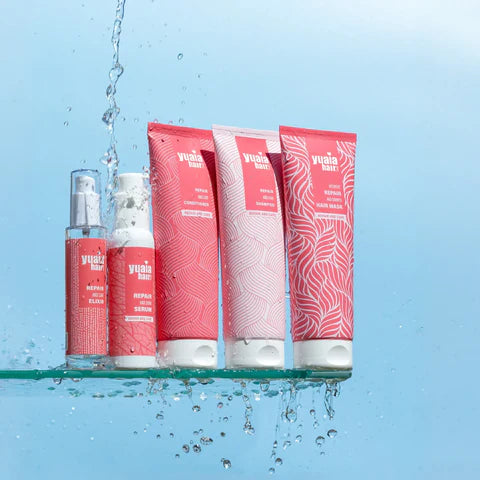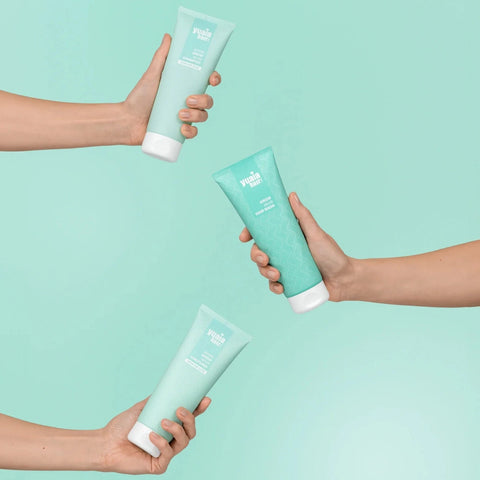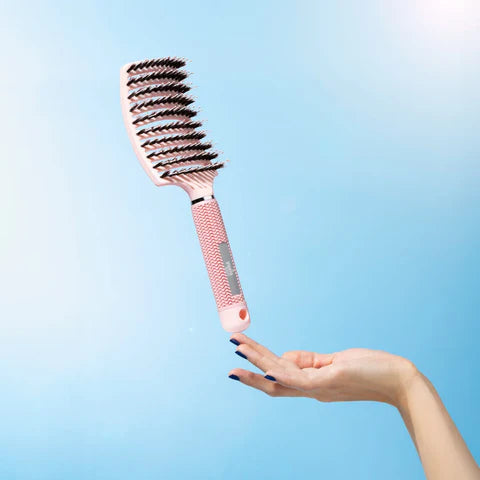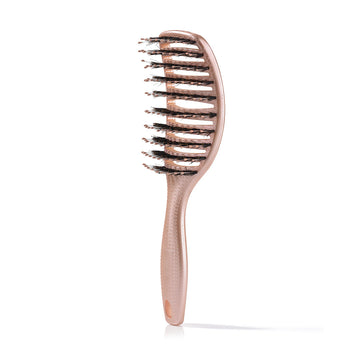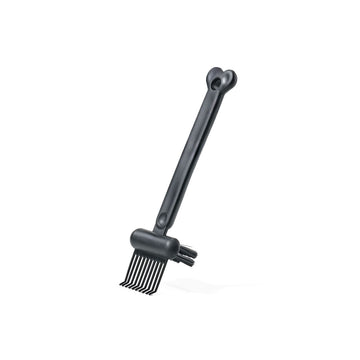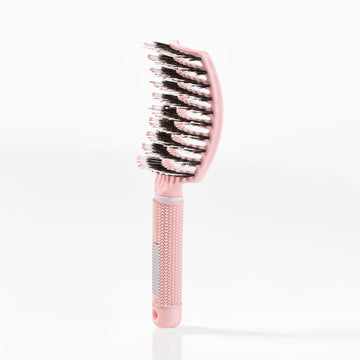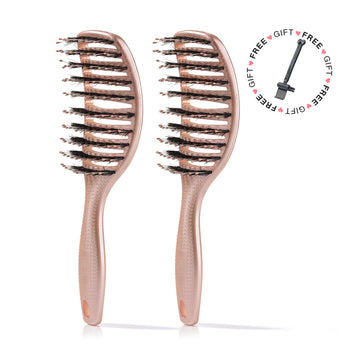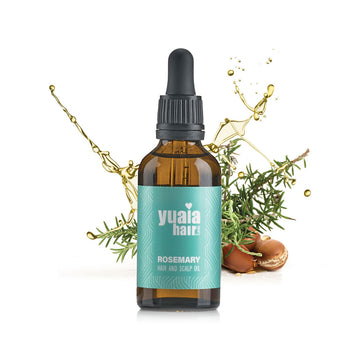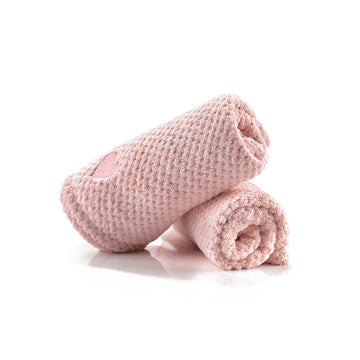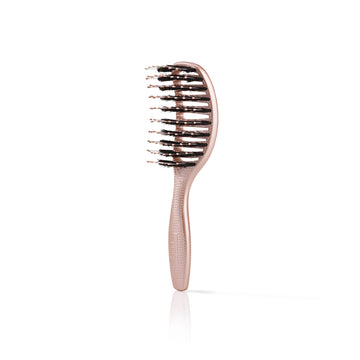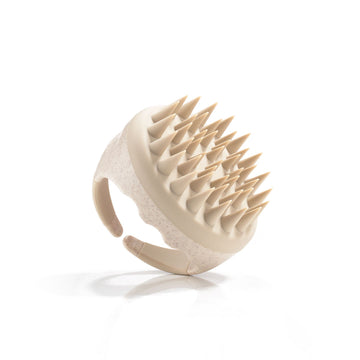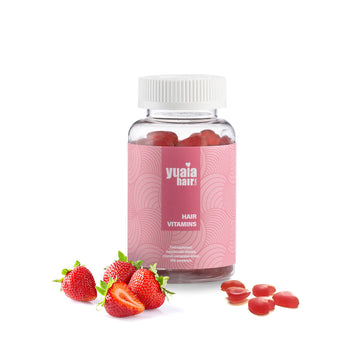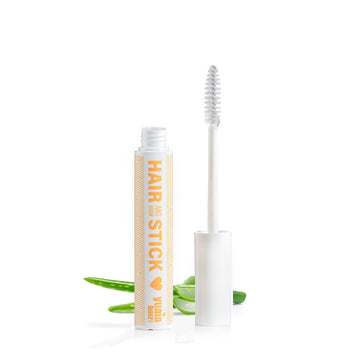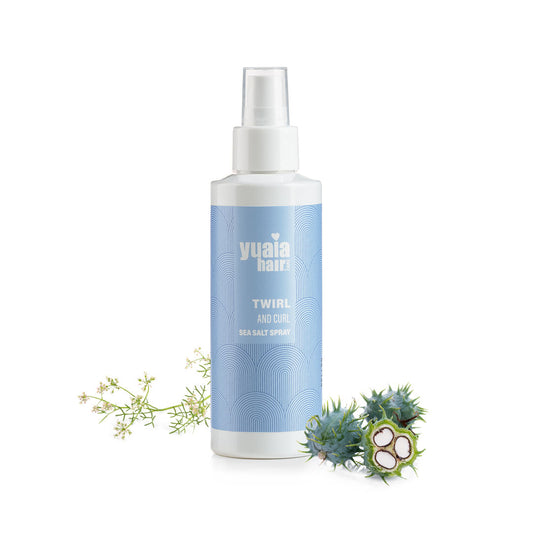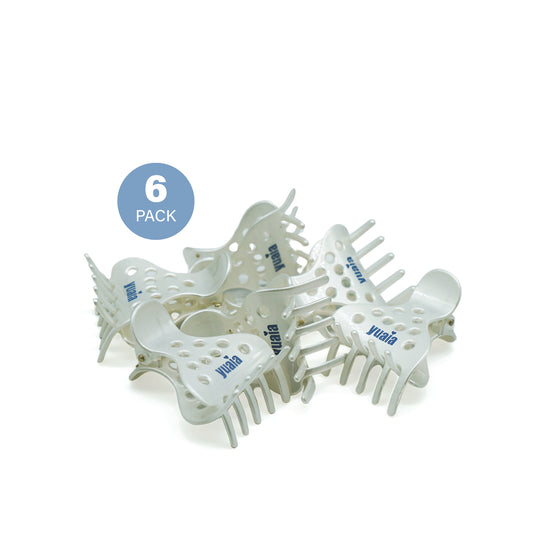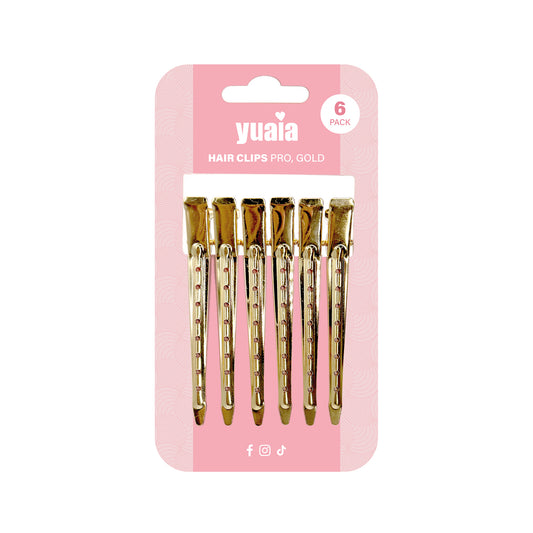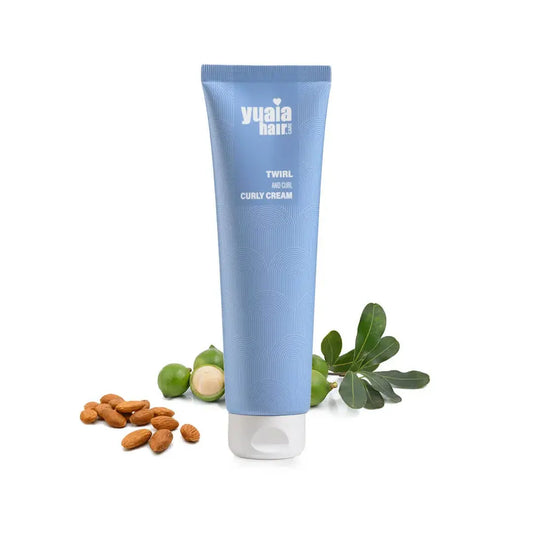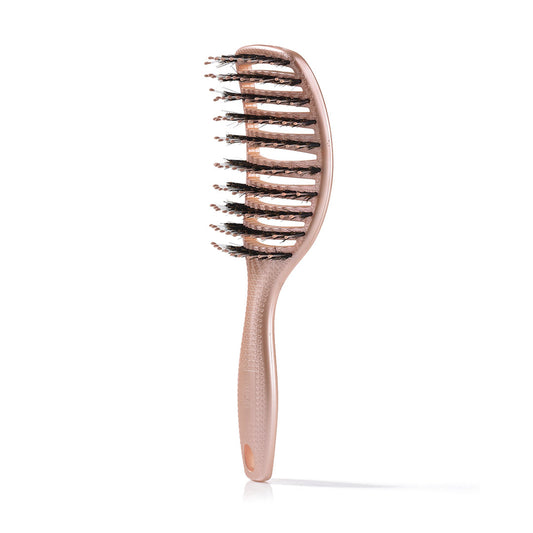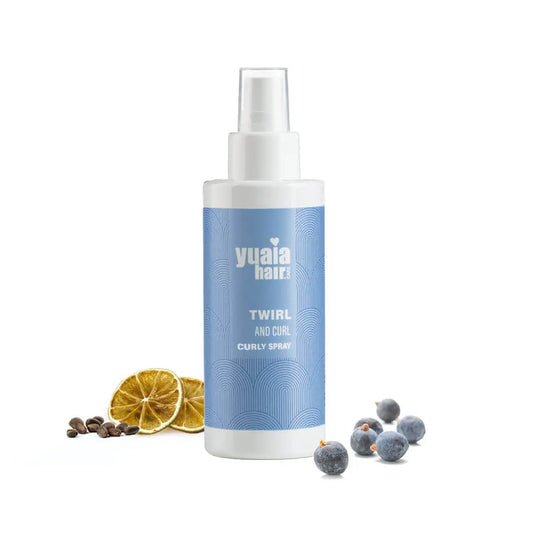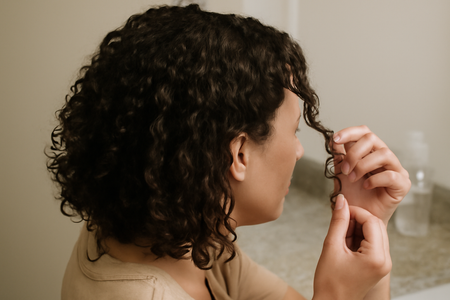
Achieving balanced curls
The aim of this blog post is to provide you with effective methods and product recommendations to help you achieve more consistent curls. By understanding the underlying causes and adopting the right techniques, you can work towards a more uniform curl pattern. From practical styling tips to moisture-rich products, we're here to guide you on the path to balanced curls.
What causes uneven curl patterns?
Uneven curl patterns can be influenced by several factors, ranging from genetic predispositions to external influences. Understanding these causes is the first step in addressing and managing uneven curls effectively.
Genetics and natural variation
Genetics play a pivotal role in determining your natural curl pattern. It's not uncommon for individuals to have different curl types across their scalp due to genetic variations. These natural differences mean that some areas might have tighter curls while others are looser or even straight. This variation is entirely normal and should be embraced as part of your unique hair identity.
Damage and hair manipulation
External factors such as heat styling and chemical treatments can significantly impact the uniformity of your curls. Frequent use of heat tools like straighteners or curling irons can alter your hair's natural texture, leading to uneven curl patterns. Similarly, chemical processes such as coloring or perming can weaken hair, causing certain sections to lose their natural curl formation. Additionally, inconsistent haircare routines, including improper detangling or rough handling, can exacerbate these issues.
Effective techniques for curl consistency
Achieving a balanced curl pattern involves employing specific techniques that promote uniformity and enhance your natural curls. Here are some methods to consider:
Finger-coiling and twist-outs
These styling techniques are particularly effective for targeting looser areas and creating uniform curl clumps. Finger-coiling involves twisting small sections of hair around your finger to encourage curl formation. Twist-outs, on the other hand, involve twisting sections of hair and allowing them to set before unraveling, resulting in more defined curls.
Diffusing and scrunching techniques
Using a diffuser attachment on your hairdryer can help set and tighten curls, especially in areas that tend to be straighter. Scrunching your hair while diffusing encourages curl formation and adds volume. This method is beneficial for enhancing the natural curl pattern and reducing frizz.
Clipping and part-flipping
These techniques can address root flatness and help visually disguise inconsistencies in your curl pattern. Clipping involves using hair clips to lift the roots while drying, adding volume and shape. Part-flipping, or changing the direction of your part, can help balance the appearance of your curls and create a more uniform look.
Importance of product and moisture
Incorporating the right products into your haircare routine is essential for maintaining curl integrity and achieving consistency. Curl-specific products are designed to enhance and define curls, promoting a more uniform pattern.
Curl creams and activators
Curl creams and activators play a significant role in defining and setting curls. Our Twirl and Curl curly cream is specifically formulated to support curl formation, providing moisture and hold without weighing hair down. This product is ideal for enhancing curl definition and ensuring each curl is perfectly formed.
Hydration and deep conditioning
Maintaining moisture is crucial for reducing frizz and supporting curl health. Regular deep conditioning treatments help retain moisture, keeping curls hydrated and resilient. This practice not only enhances curl consistency but also improves the overall texture and appearance of your hair.
How regular trimming can enhance curl patterns
Regular trimming is an often overlooked but important aspect of maintaining healthy and consistent curls. By removing damaged or split ends, trimming helps prevent further breakage and encourages a more uniform curl pattern. For those experiencing significant damage, a more drastic approach, such as the "big chop," might be necessary to start fresh with healthier hair.
Trimming benefits
Regular trims not only remove split ends but also help maintain the shape and bounce of your curls. By eliminating damaged portions, your hair can better hold its natural curl pattern, resulting in a more cohesive look. Trimming every 6-8 weeks is generally recommended to keep your curls in optimal condition.
Damage control with the big chop
For those dealing with extensive damage, the big chop can be a transformative step. This involves cutting off a significant portion of damaged hair, allowing healthier hair to grow out. While it may seem daunting, the big chop can significantly improve the uniformity and health of your curls.
Embracing natural patterns
While striving for perfectly even curls is a common goal, it's important to embrace the natural variation in your hair. Accepting and working with your unique curl pattern can lead to more satisfying styling results and a healthier relationship with your hair.
Acceptance of natural variation
Understanding that some variation in curl pattern is natural can relieve the pressure to achieve perfect uniformity. Embracing your curls as they are and focusing on enhancing their natural beauty can lead to more confidence and satisfaction with your hairstyle.
Working with what you have
Instead of fighting against your natural curl pattern, consider techniques and products that enhance what you already have. Using curl-specific products and methods tailored to your hair type can help you achieve the best possible results while celebrating your hair's individuality.
Frequently asked questions
Is it possible to train curls over time?
Yes, it is possible to train curls over time by consistently using techniques like finger-coiling and twist-outs. Regularly encouraging your hair to form curls in a particular way can help establish a more consistent pattern over time.
What role does a boar bristle brush play in styling?
A boar bristle brush, such as our Curvy Brush, helps distribute natural oils from the scalp throughout the hair, enhancing shine and curl definition. This can be particularly beneficial for maintaining a polished look and reducing frizz.
How often should I use curl enhancing products?
The frequency of using curl enhancing products depends on your hair type and styling routine. Generally, applying curl creams or activators after each wash can help maintain curl definition and manageability. Adjust the frequency based on how your hair responds to the products.
 2-4 day UK delivery
2-4 day UK delivery
 25.000+ satisfied customers
25.000+ satisfied customers
 Satisfaction Guarantee
Satisfaction Guarantee



